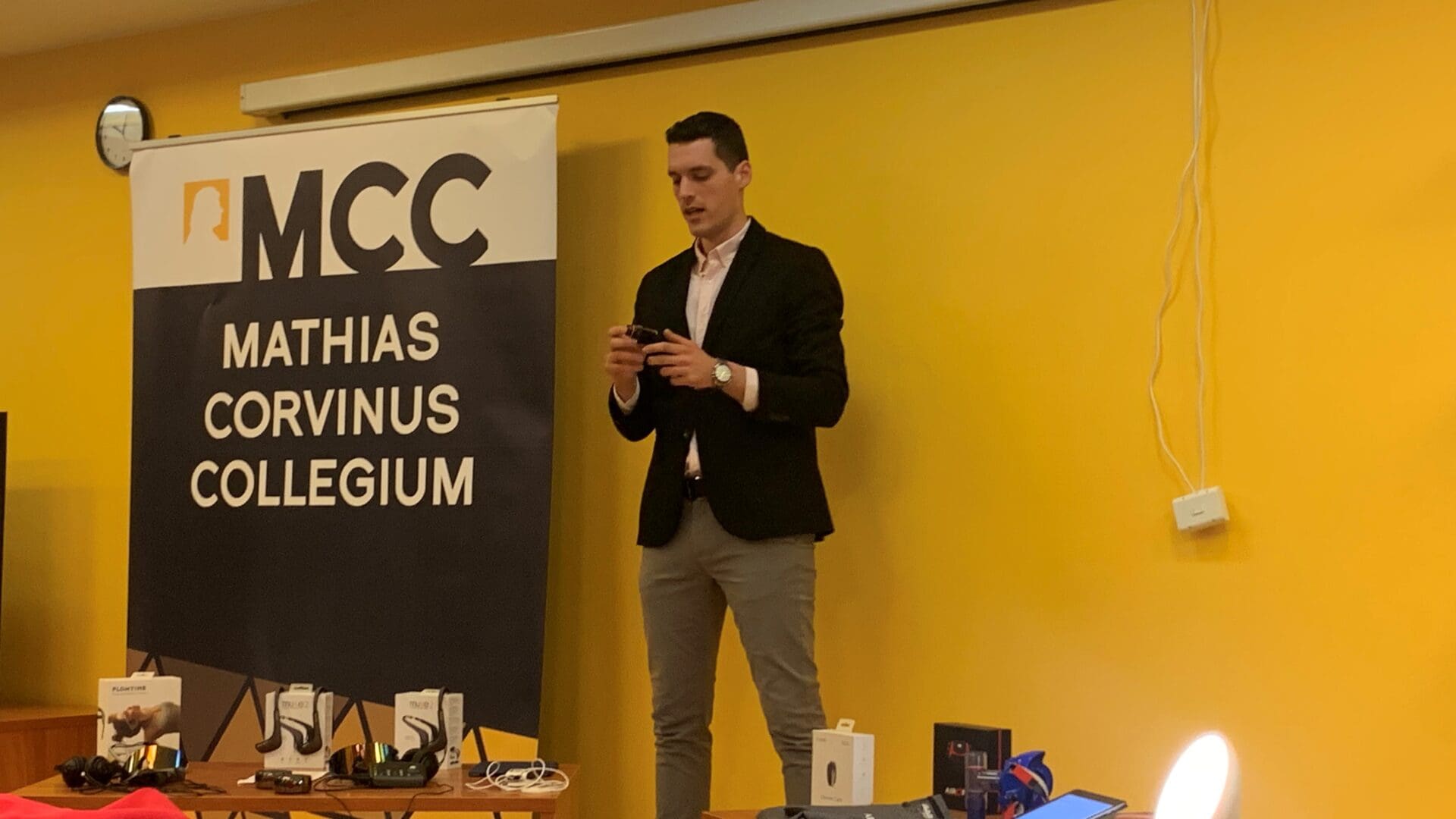On 6 April MCC held a presentation for the press at their centre about the tech tools they use to help their students and faculty focus, rest, workout and study. MCC emphasised that the focus is to keep the mental and physical wellbeing of their students at a permanently high level. This is why the have created the so- called ‘mental gym’. It is a room in the centre, located next to the gym and the library, allowing students and faculty to indulge in all matters physical and mental.
The ‘mental gym’ works just like a library. One can visit the room and lend a tech tool as they would a book. The high-tech arsenal of the ‘mental gym’ was on display during the presentation. First guests were welcomed and were given a presentation about the main focus of MCC currently. The speaker underlined that the goal of the institution is do discover talented young Hungarians and give them a fighting chance in the world. MCC currently has 7,000 students and is aiming to hit 10,000 by next year. While steering the youngsters into the direction of success, MCC is also researching the idea behind ‘flow’.
The Flow State
Hearing someone say that they are ‘in the flow’ is not uncommon. Whether a person is working, creating art, or even doing households chores, we all know vaguely what someone refers to when talking about flow. This state is achievable, perhaps even forcibly. The concept of flow and its relation to happiness was created by Hungarian American psychologist, Mihály Csíkszentmihályi, and MCC had consulted him on their own project before his passing.
Researching flow is not an easy task, since by its core definition it is hard do grasp. There are some psychological tests that would attempt to look for it, however, there has never been a device made that could take physical cues and translate them to define whether someone has reached flow state. One of the unique Hungarian inventions at the event did just that. Developed by MCC, the multimodal biosensor is able to detect the flow state. It utilises six sensors that pick up vital signs such as EEG, pulse and HRV, and allows trained experts to use the data for research. The data from users is instantly transferred into a secure and anonymous storage system that researchers can access. The goal of the research is to find a way to induce the flow state, the idea being that if one can induce this state, they can perform better at any given task at hand. Achieving the flow state may be useful for studying, working, or even for high-level athletes.
Other than the biosensor, guests were presented with a wide range of high-tech devices. The MUSE head and wristband can record physiological signs from the body, giving important data to the researchers working on flow state. Another device is the HEARTBEAT, a T-shirt that allows its users to see their EKG signs in real time. The David Delight Pro brain training device was also on display. It allows users to stimulate nerves by electric impulses, which can help with sleeping, calming the mind and improving the ability to concentrate.
The Main Attraction
The device that is also created and entirely developed by Hungarians, the VR-Headset stole the show. MCC developed it in order to not only help their students, but their faculty as well. It is in its second stage of development right now, and surely, there is more to come.
The headset works as any other gaming headset would, except that this once includes another device that monitors brain activity. The software is developed to help users learn public speaking. With a plethora of settings, one can achieve any setup they would like to practice at any time. For example, one can set a time limit on their presentation, decide whether to use a slideshow on a laptop while speaking, switch between standing, held or clipped-on microphones, make the audience silent or disturbing, and even adjust the light levels in the room. It is also imperative to mention that while the speaker is holding the presentation, the device records every last detail of it, and after the presentation is done, users can access a review of their performance.
The details that the device record include how loud the user was speaking, whether there was too much movement, the amount of gesticulation, the length of pauses between sentences, and which parts of the audience were addressed—this being made possible by the eye-tracker that the device also includes—and get an overall evaluation of how one did on stage. While analysing the data, users are able to replay the video footage of the presentation and see changes live. For example, when rewatching the video, one is able to analyse when they moved too much or too little, and use the visual feedback to improve their public speaking skills by their next appearance.







